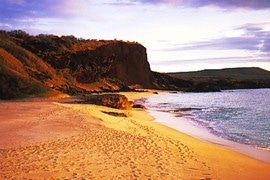Molokai What Is Known For
Stay at a handful of small hotels and condominiums. The only town, three-block-long Kaunakakai, would look at home on a Wyoming back road. Recreational activities tend to be low-key too.
Eat at Kualapuu Cookhouse, where the lamb with maple-syrup demiglaze and baby back ribs with homemade guava-barbecue sauce are just a mere hint of the offerings.
Wake up with the Coffees of Hawaii Molokai Plantation in Kualapuu. Take the espresso tour or a guided mule tour of the coffee fields.
See the sea cliffs of Molokai's Na Pali Coast, the highest in the world. For more than 135 years, they served to isolate Kalaupapa, the island's seaside leper colony — one of the most hauntingly beautiful places in the islands.
Visit Molokai's finest beaches — Papohaku, Kepuhi and Kawakiu, which have broad expanses of uncrowded sand. High surf and currents can sometimes make swimming hazardous, but a moderate hike on the northwest corner of the island will take you to the secluded cove at Moomomi Beach, where you can swim year-round.
Ride a mule down the spectacular trail to the Kalaupapa Peninsula, but the 1,700-foot descent (with 26 switchbacks) is also a great hike – of course, you do have to hike back up. Take the fascinating tour of the community, which was established as a leper colony in 1866, served by the famed Belgian priest Father Damien.
Saddle up and play paniolo (Hawaiian for "cowboy") at Puu O Hoku, a 14,000-acre cattle ranch where lush pastures give way to tropical forests; a guided trail-ride offers the chance to see axis deer up close and humpback whales cavorting offshore.
Fly a kite at Big Wind Kite Factory where owner Jonathan Socher offers free flying lessons with the factory's handmade kites at one of the most scenic vistas on the western plateau.
Learn more at gohawaii.com/molokai.
